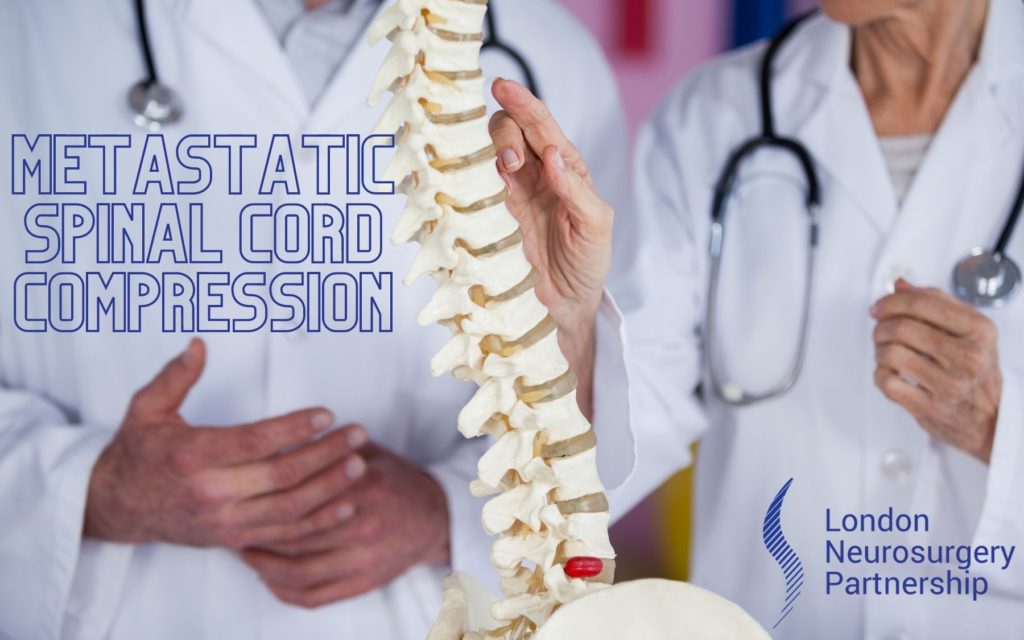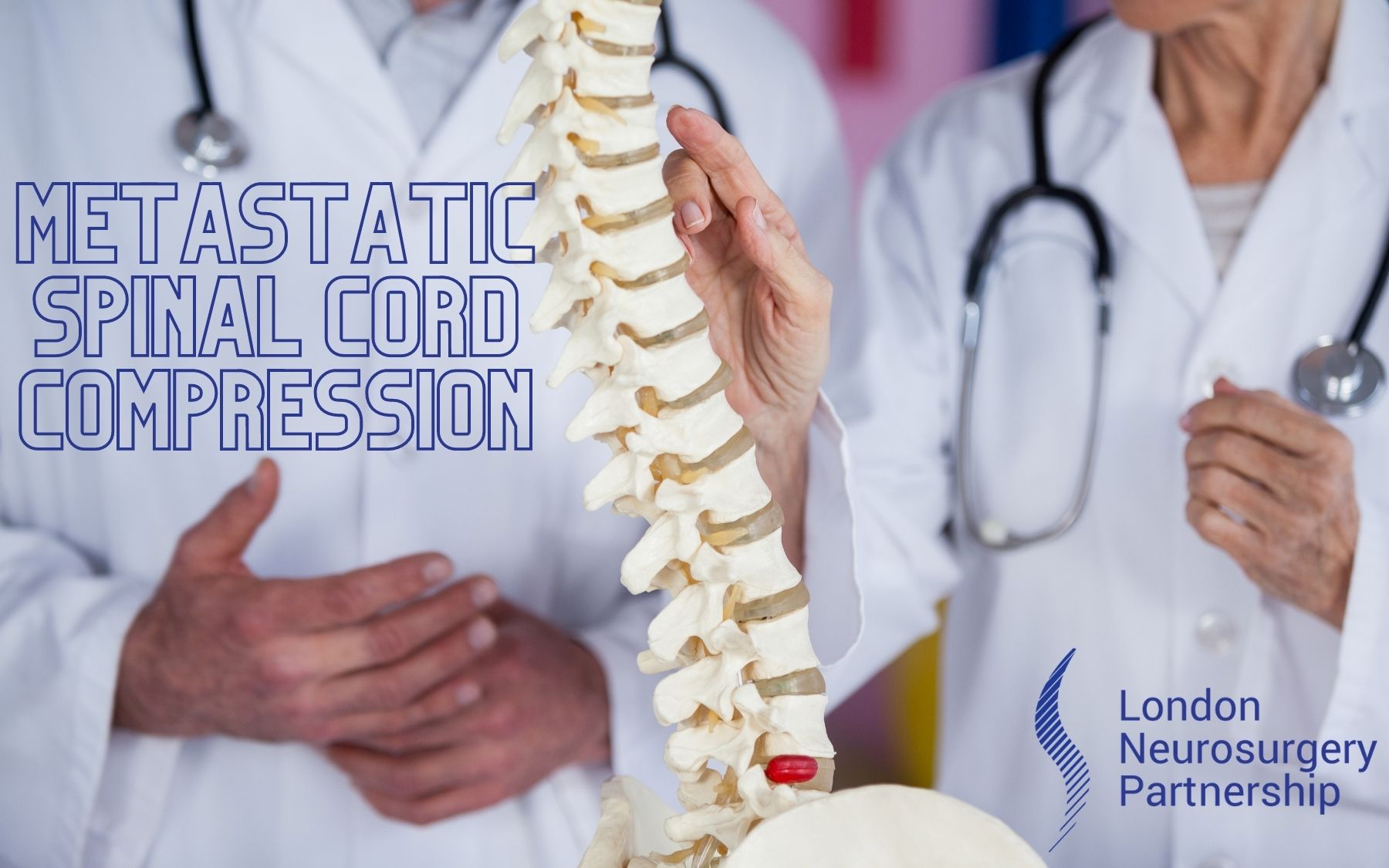
Metastatic spinal cord compression (MSCC) is one of the complications of cancer and occurs in 3-5% of all cancer cases. It is however more common in patients with breast, prostate and lung cancer. Metastatic refers to the spread of cancerous cells from a tumour elsewhere in the body whilst spinal cord compression refers to pinching or squashing of the spinal cord due to a narrowing on the spinal canal and the channels through which the nerves exit the spine.
What is MSCC?
Metastatic spinal cord compression is the phrase used to describe either the collapse of a vertebral body (the larger, weight bearing part of the spinal bones) or the tumour growing into the spinal canal both with the result of putting pressure on the spinal cord, causing a range of symptoms.
What are the symptoms of MSCC?
There are a number of signs and symptoms associated with Metastatic spinal cord compression. Back pain is present in 95% of patients who have MSCC and is often the first symptoms that patients experience. The pain may be localised to the back or radiate down the arms or legs. Neurological symptoms of MSCC include:
- Limb weakness
- Difficulty walking
- Sensory loss, numbness, pins and needles
- Bladder or bowel dysfunction
- Nocturnal spinal pain
- Increased pain when coughing, sneezing or straining
Diagnosis of Metastatic spinal cord compression is through an MRI scan and assessment by your neurosurgeon, oncologist and neurologist.
Treatment options for MSCC
Treatment can vary depending on the symptoms, patient situation and several other factors. Sometime radiotherapy may be the best option for the patient, other times pain relief may be more suitable. In some cases surgery may be the best treatment route for the patient. The decision making process will be done in an MDT (multidisciplinary team) setting and in discussion with the patient.
If surgery is deemed the best option for treating Metastatic spinal cord compression the patient will undergo decompression surgery. During surgery the surgeon will remove some of the bone at the back of the spine (lamina) to create more space for the spinal cord which is being compressed. Read more about decompression surgery here.
Another surgical option may a kyphoplasty whereby a bone cement is injected into the vertebra to stabilise it and reduce any micro-movement. You can read more about kyphoplasty here.
Often surgery is followed by radiotherapy to target the tumour. This may include CyberKnife – read more here.
This article is intended to inform and give insight but not treat, diagnose or replace the advice of a doctor. Always seek medical advice with any questions regarding a medical condition.






0 Comments